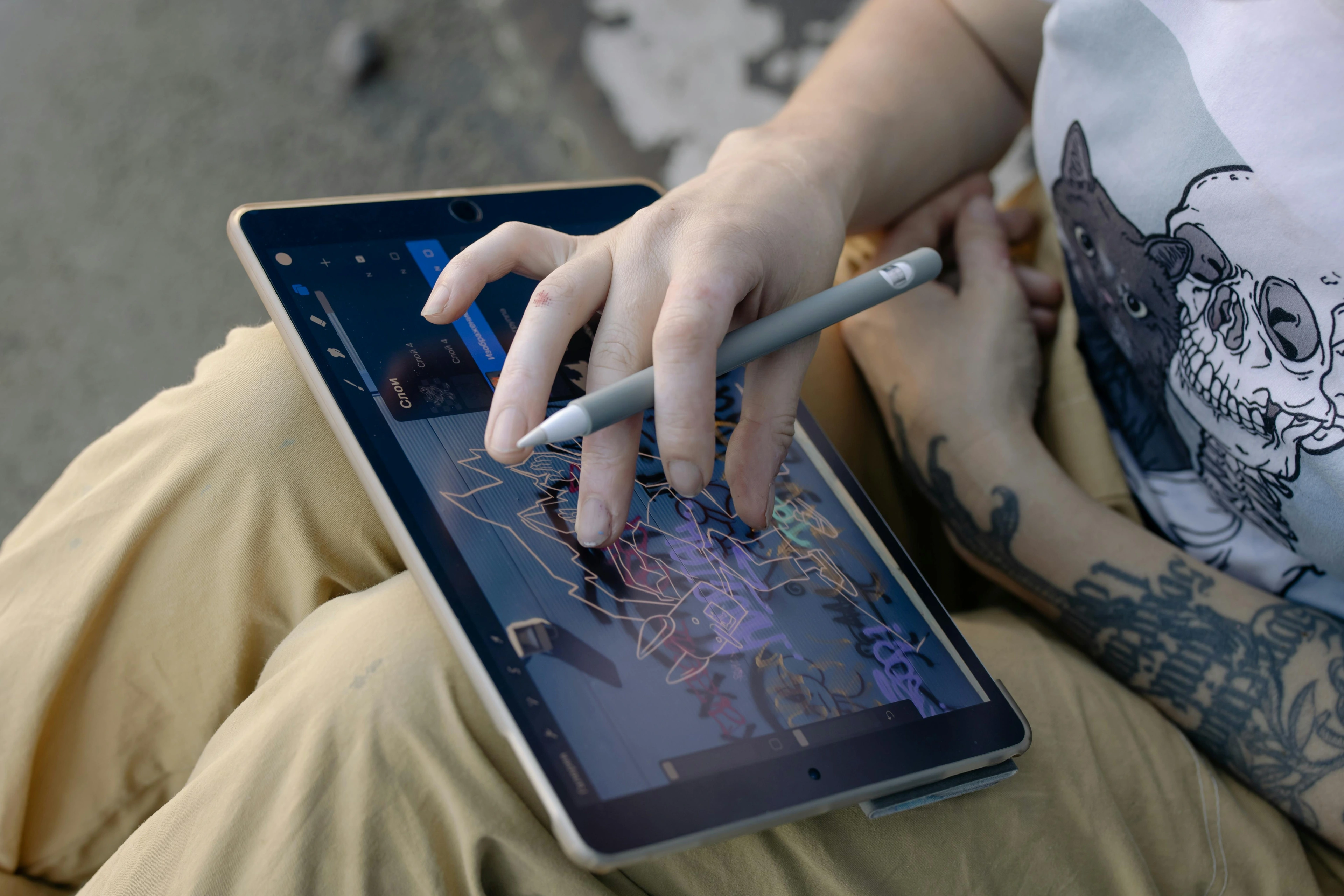
Unleashing "Brain Time": The Profound Impact of Art on Child Development
Discover how art is essential "brain time" for kids, boosting emotional intelligence, cognitive skills, and imagination. Get practical, fun tips for parents to encourage growth and a lifelong love of creation.
Unleashing "Brain Time": The Profound Impact of Art on Child Development
You know, sometimes I look at my own work – all abstract, layered, and yes, sometimes a glorious mess – and I can still see glimpses of that wide-eyed child who just wanted to make marks with colors. Honestly, some days I still end up looking like I wrestled a rainbow myself! I remember, quite vividly actually, being about six years old, sitting on the kitchen floor with a huge roll of butcher paper and a box of chunky crayons, drawing a fantastical city that only existed in my head. There was this absolute freedom, this pure, uninhibited joy in making marks, in seeing my inner world spill out onto the paper. It's remarkable, isn't it? How those early, uninhibited explorations with a crayon or a blob of paint can genuinely set the stage for a lifetime of thinking, feeling, and creating. Seriously, it's more than just glitter and glue (though I do love glitter, don't get me wrong). Lately, I've been thinking a lot about how truly vital art is for kids – not just as a fun pastime, but as a foundational pillar for everything they become. As an artist and someone deeply invested in how we nurture creative minds, I see art as "brain time" in the best possible way, fostering what I like to call a "beautiful mind" and laying the groundwork for future innovators. This isn't just theory; it's a powerful engine driving holistic development.
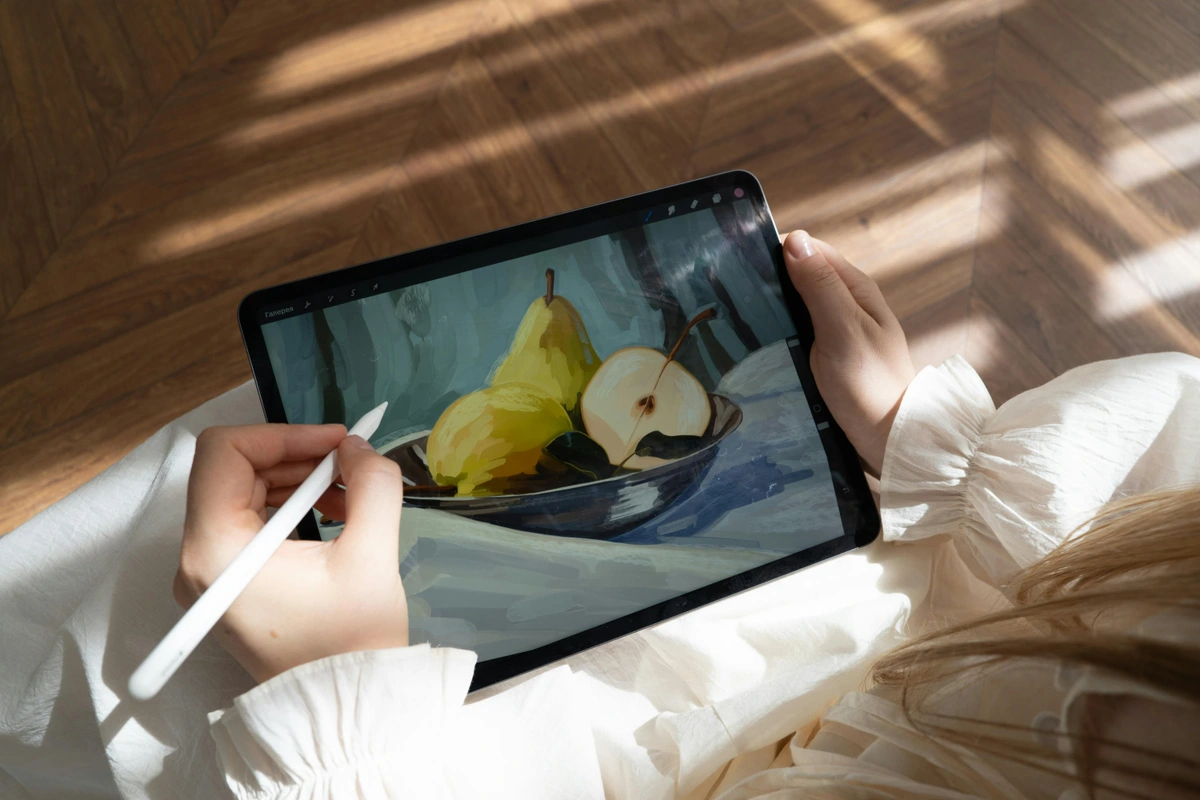
Why Art Isn't Just "Playtime" – It's Essential "Brain Time"!
I remember watching a little one intently drawing something only they could see in their mind. The focus, the sheer determination! It made me realize that what looks like simple play is actually complex problem-solving in action. When a child draws, paints, or sculpts, they’re not just moving their hands; they’re engaging their entire brain. They’re thinking, "How do I make this blob look like my dog?" – perhaps trying a lopsided circle for the head, then adding two small triangles for ears, realizing it looks more like a cat, and adapting on the fly. Or maybe it's, "What color expresses how I feel right now?" It's a beautiful dance where imagination meets reality, helping them turn abstract ideas into something they can see and touch. What's the most surprising thing you've seen a child discover through art, perhaps even surprising themselves?
Emotional Expression: Giving Feelings a Form and Cultivating Self-Awareness
Children, with their burgeoning emotions, often struggle to put big feelings into words. Art offers them a fantastic, non-verbal outlet. A scribble that’s frantic and dark might represent anger, while bright, sweeping strokes could be joy. It's a powerful way for them to process their world – their fears, their excitements, even difficult experiences, trauma, or the profound sadness of grief and loss – without having to articulate them perfectly. Think of it as a form of visual translation, much like I might translate emotion into abstract art, even at an early age, creating a safe space to explore complex feelings. This process also helps children to identify and label their emotions, bridging the gap between an internal feeling and an external understanding. From a neurological perspective, engaging in creative activities can actually trigger the release of neurotransmitters like dopamine, which are associated with pleasure and reward, and can even help reduce cortisol levels, the stress hormone. This inherent calming effect not only helps children manage intense emotions in a healthy way but also builds self-awareness about their own emotional landscape. As an artist, I understand this deeply; sometimes a painting expresses what words simply can't. This also helps them develop empathy, as they learn to understand the emotions conveyed in their own art and, later, in the art of others. What's more, by providing a constructive outlet, art can support children in developing self-regulation, helping them manage intense emotions in a healthy way. In principle, it’s akin to art therapy, which intentionally uses creative expression to help individuals explore emotions and resolve conflicts, offering a vital channel for children to process their inner world.
Art: Your Child's Brain's Favorite Gym for Cognitive Growth
Beyond processing feelings, art is also a powerful engine for cognitive growth. When a child creates art, they're actively engaging a multitude of skills, essentially giving their brain a full-body workout. It's a whirlwind of neurological activity! If you're curious about how deeply colors affect us, I've even explored the psychology of color in abstract art myself. What surprising cognitive leap have you witnessed in a child through art?
Skill | How Art Nurtures It |
|---|---|
| Problem-solving | "How do I make the tree stand up on my paper?" or "What happens if I try a different material?" Children actively devise strategies to overcome artistic challenges, directly translating to scientific and engineering thinking. |
| Critical thinking | Children learn to analyze visual information, understand different perspectives (like representing a 3D object on a 2D surface), and form opinions about their work. They evaluate "Does this work?" and "How can I make it better?", refining ideas and developing a sense of composition. |
| Spatial awareness | Understanding shapes, sizes, and where things fit relative to each other on a page or in a sculpture. This skill is crucial for geometry, understanding maps, and even organizing physical spaces. |
| Fine motor skills | Holding a brush, cutting with scissors, manipulating clay, or even drawing delicate lines. This develops the dexterity and hand-eye coordination essential for writing, tying shoes, and using tools later on. |
| Observation & Pattern Recognition | Really looking at the world around them to translate its details and forms onto paper or into a sculpture. This sharpens attention to detail and helps identify recurring shapes, colors, or structures, a critical skill for scientific inquiry and critical analysis. |
| Understanding Cause and Effect | "If I mix blue and yellow, I get green!" Or, "If I press harder, the line gets darker." This direct feedback loop is incredibly powerful, empowering children with a sense of agency and control. It's the magic behind how artists use color and materials. |
| Decision-making | Children are constantly making choices about color, line, composition, and what to include or exclude. Each stroke or placement is a decision, building their capacity for independent thought and strategic planning. |
| Patience and Focus | Immersing themselves in the creative process, developing ideas, and working through challenges helps children cultivate both patience and sustained focus, essential for academic and life success. |
| Language development | As children describe their artwork, or discuss the art of others, they build vocabulary related to colors, shapes, textures, and emotions. This verbal articulation of visual experiences enhances their communication skills. |
| Memory and Recall | Remembering how to mix specific colors, recalling steps in a craft project, or reproducing a visual from imagination all strengthen working memory and long-term recall. This process of encoding and retrieving visual and procedural information is a direct workout for the hippocampus. |
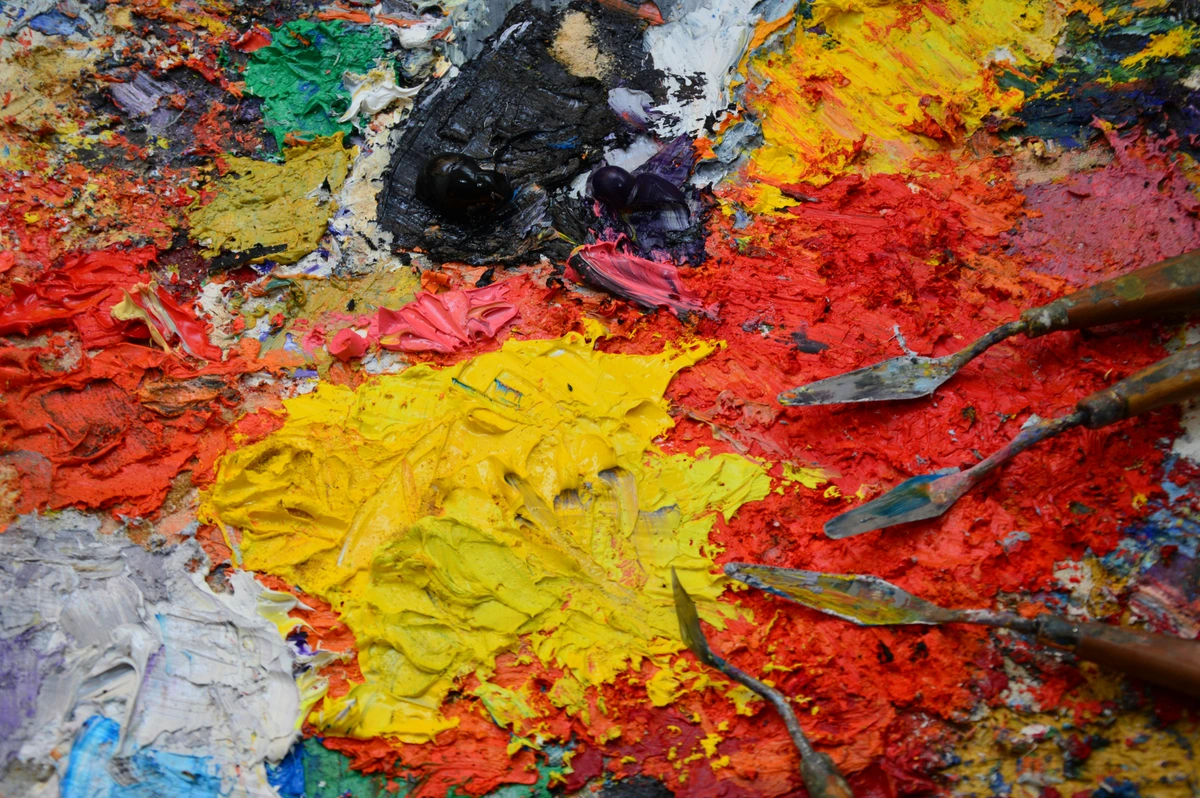
So, you see, it's not just about a pretty picture; it's about building a robust, agile mind capable of tackling life's complexities. Every brushstroke, every piece of clay molded, is a tiny step in this grand cognitive adventure, laying a vital foundation for creativity.
Fostering Creativity: Beyond the Lines and Unleashing Imagination
Creativity, to me, isn't about being "good" at art in the traditional sense. It's about thinking differently, finding new solutions, and embracing the unexpected. It's about divergent thinking – the ability to generate multiple, unique ideas from a single prompt, like brainstorming all the possible ways to draw a monster. This is a cornerstone of innovation, and honestly, children are natural masters of this. They don't have the same inhibitions we adults often develop. They'll draw a purple sun and a green sky because, well, why not? This inherent freedom to experiment and invent is exactly what we should be nurturing. It’s also how they learn a growth mindset, understanding that their abilities can be developed through dedication and hard work, rather than a "fixed mindset" which assumes talent is innate and unchangeable. This raw impulse to imagine and create is itself a fundamental cognitive skill, the groundwork for innovation in any field, not just art. I mean, if you've ever looked at some of the wild things I create, you'll know I still try to tap into that childlike freedom. My own creative flow relies heavily on letting go and allowing the unexpected, much like a child with a fresh box of crayons.
But creativity isn't just about thinking broadly; it also involves convergent thinking, which is the ability to find the single best or most correct answer to a problem, like selecting the most effective way to make that monster look scary. While divergent thinking generates possibilities, convergent thinking helps refine and select. Art, in a surprising way, fosters both: children divergently explore colors and forms, then convergently choose which lines "work" to make their dog recognizable or which combination of shapes best conveys their feeling. It’s a constant interplay, a mental agility that’s incredibly valuable. This interplay of divergent and convergent thinking, honed through artistic exploration, directly builds many of the cognitive skills we just discussed in the 'brain gym' table – from problem-solving to decision-making.
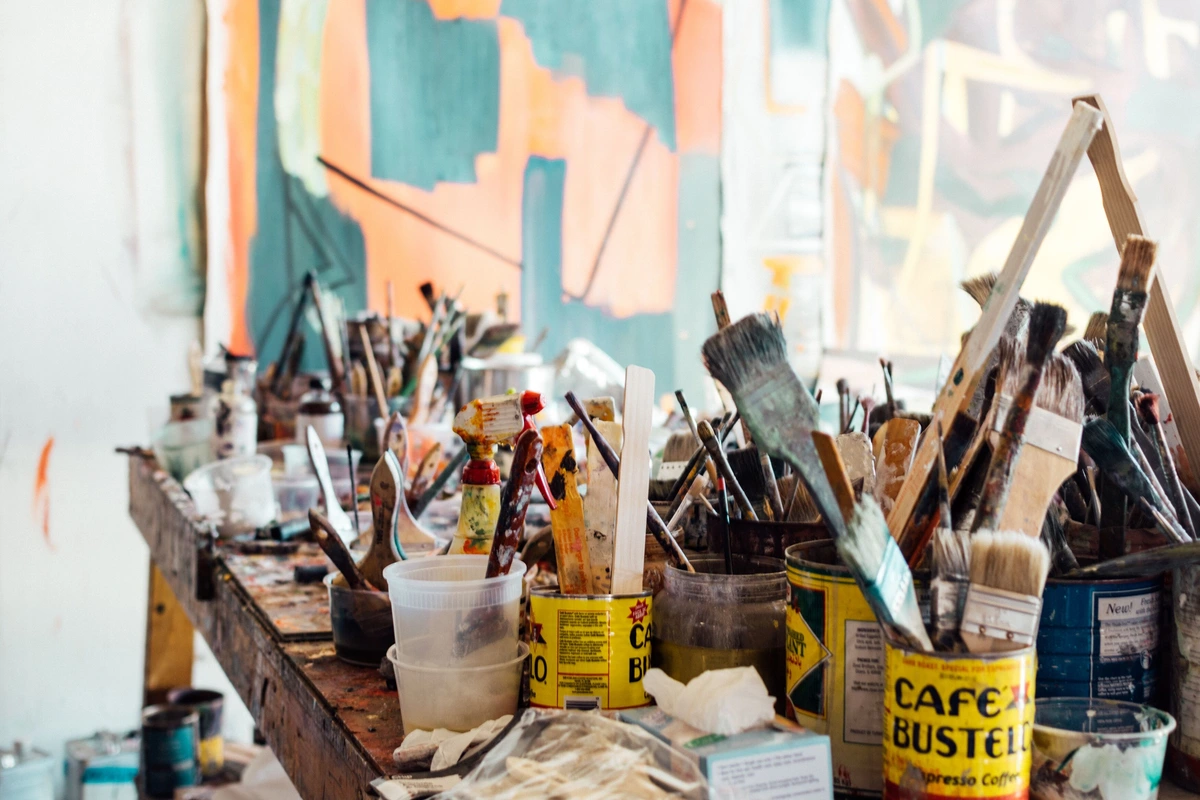
Encouraging the Young Artist (Without Being a Pushy Art Teacher)
Okay, so we agree art is great. But how do we encourage it without making it feel like homework or, heaven forbid, another item on a busy schedule? My philosophy is simple: provide the tools and the space, then get out of the way. It's about fostering the pure joy of play-based learning and cultivating a sense of self-efficacy, where children believe in their own ability to succeed and make choices.
1. Make it Accessible and Inspire with Materials
You don't need a fancy studio. A corner of the kitchen table, some old newspaper, and a few basic supplies are more than enough. The key is making it readily available. If they have to ask for it every time, the spark might fade. Think about how easy it is to grab a book; art supplies should be similar. Even if your child is more interested in building or science, providing art supplies can help them visualize and design, bridging the gap between disciplines. And really, you don't need to break the bank. Homemade paint from flour and food coloring, collages from old magazines, or sculptures from cardboard boxes can be just as creatively stimulating as store-bought kits. You can even try gathering natural elements like leaves, twigs, and pebbles for beautiful, free nature collages, making simple salt dough for sculptures, or even creating stamps from potato halves, using toilet paper rolls for binoculars, or crafting fantastical creatures from pipe cleaners and cotton balls. Crucially, offering a variety of textures and mediums—from smooth paper to rough fabric, from thick clay to delicate watercolors—stimulates a child's sensory exploration and expands their understanding of materials, enriching their creative palette. Always ensure materials are non-toxic and age-appropriate, especially for younger children, because safety truly comes first.
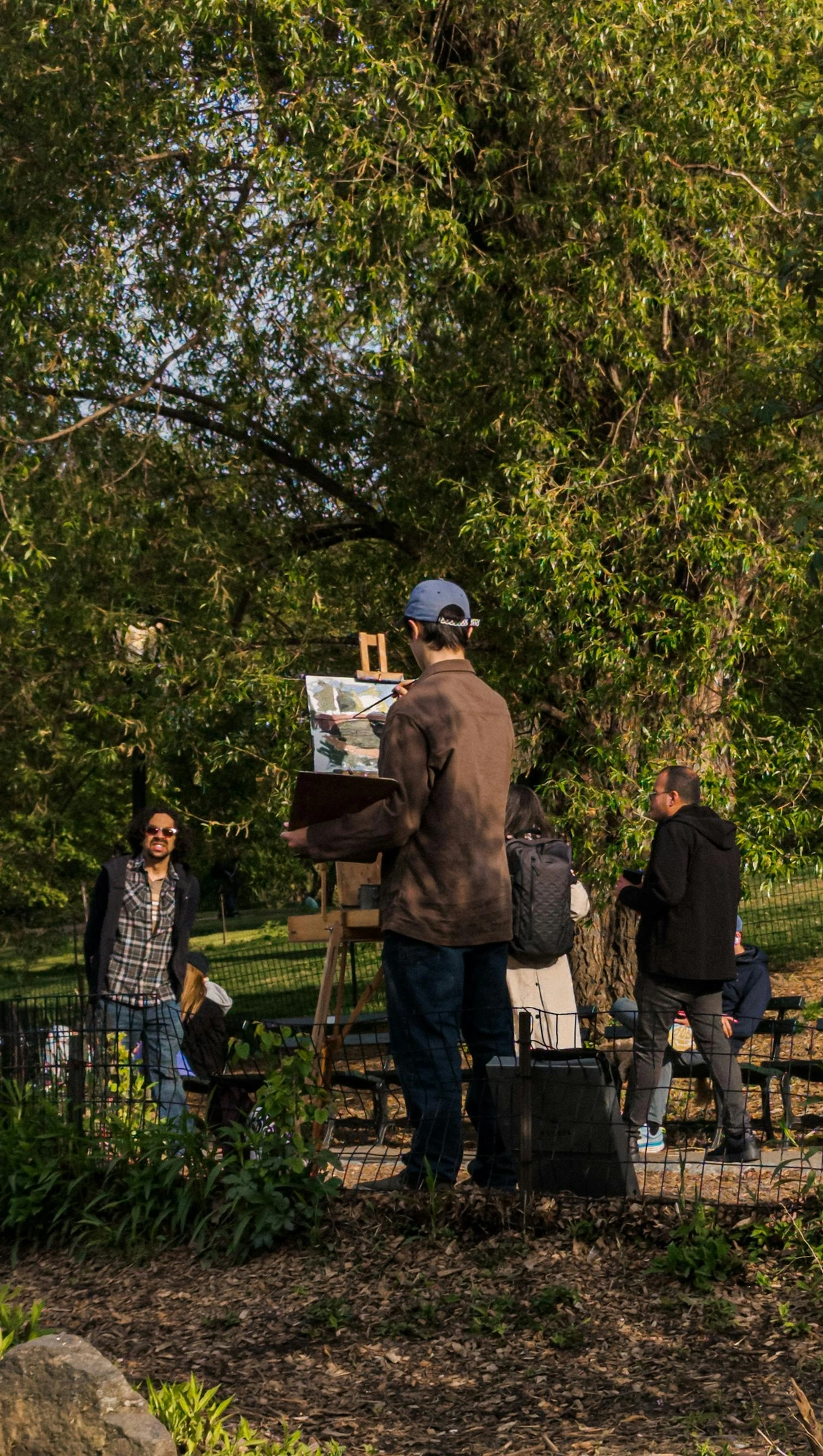
2. Focus on the Process, Not the Product
This is huge, and I can't emphasize it enough. It's not about creating a masterpiece worthy of a gallery (though who knows, maybe someday they'll be selling their art on my art for sale page!). It's about the joy of creation itself, the exploration, the effort, and the persistence. This is why process-oriented art activities, which emphasize the experience of making over a perfect final result, are so valuable. Art teaches children resilience and perseverance as they navigate challenges and learn from "mistakes," seeing them as opportunities for growth. Critically, this approach fosters intrinsic motivation, meaning children engage with art because they find it inherently rewarding, not for external praise. Instead of asking, "What is it?" ask them, "Tell me about what you did, how it felt, what was the most challenging part for you, or what you learned." Celebrate their unique style and the journey of making, rather than just the final outcome. By focusing on the process, we celebrate effort and experimentation over some imagined 'talent,' which can sometimes be a real creativity killer.
3. Embrace the Mess (Seriously)
Art is messy. Especially child art. Accept it. Plan for it. Old clothes, a drop cloth – these are your best friends. The fear of mess can be a real creativity killer. I mean, some of my journey with mixed media pieces started with a glorious, paint-splattered disaster, and honestly, some days I still end up looking like I wrestled a rainbow myself. Letting kids get gloriously messy fosters a sense of freedom and adventurous experimentation. What child doesn't love the feeling of squishing paint between their fingers?
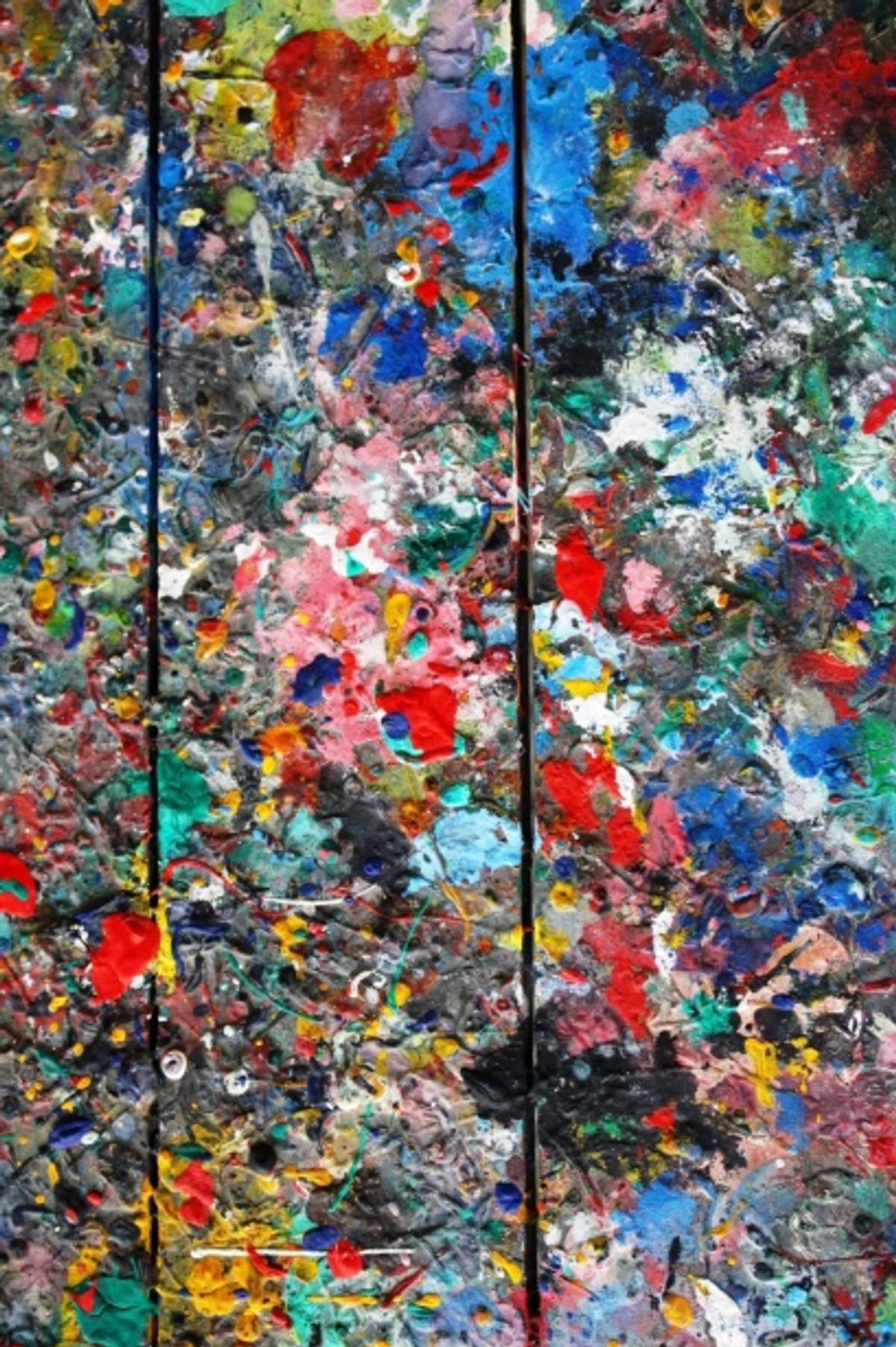
4. Talk About Art (Any Art!)
Go to museums (if you're ever in the Netherlands, my museum in 's-Hertogenbosch is a thought!), look at art books, or even just admire street art. Talk about what you see, how it makes you feel. This helps them understand that art is a language, a form of visual storytelling techniques in narrative art and understanding symbolism in contemporary art. You can even look at how to choose abstract art for a child's room together! By engaging in conversations about art, we're not only fostering their appreciation but also developing their critical thinking and descriptive language skills. It's also a wonderful way to introduce them to cultural understanding and appreciation, exposing them to diverse artistic traditions and perspectives from around the world. What artistic traditions from your own background might you share with a child? Perhaps sharing simplified stories of artists like Henri Matisse and his cut-outs, or Wassily Kandinsky's vibrant abstractions, can ignite curiosity about different ways of seeing and creating. Consider also introducing them to folk art, which often tells communal stories through simple, accessible forms, or indigenous art, which can open up entirely new visual vocabularies and cultural narratives.
5. Let Them Lead with Exploration and Sensory Fun
Don't tell them what to draw or how to draw it. If they ask for help, guide them, but let their vision shine. Their art is their expression, not yours. Consider encouraging collaborative projects too, like a family mural or a shared sculpture; this can foster teamwork and communication in a fun, creative setting. This freedom to lead helps build patience and focus as they immerse themselves in their creative worlds, developing their ideas at their own pace. And don't forget the crucial role of sensory exploration; letting children squish paint, mold clay, or experiment with different textures adds another rich layer to their creative journey. Technology also offers new avenues; digital drawing apps, animation tools, and even simple photo editing can open new avenues for creative expression, complementing traditional methods beautifully and fostering unique forms of agency as they navigate new digital landscapes. What's one art material you'd love to see a child explore for the first time, perhaps something unexpected?

A Philosophical Brushstroke: Understanding the "Why" Behind the "How"
Okay, we've talked a lot about the practical 'how-to's, but indulge me for a moment. Let's take a quick philosophical detour into history, because understanding why this approach to art is so effective gives us deeper conviction. You might wonder, how did we even get to this understanding of art's importance? Historically, art education wasn't always seen as central. For centuries, it was often reserved for the elite or focused purely on vocational training for artisans – a very different beast from what we now champion. The idea of art for personal expression and holistic development, particularly for all children, really gained traction with educational reformers in the 19th and 20th centuries. I've always been fascinated by figures like Friedrich Froebel, with his 'gifts' and 'occupations' for play-based learning, and John Dewey, advocating for creative play and hands-on learning, who were pivotal. Their philosophies directly inform our modern understanding that art is integral to a child's overall development, not just an extracurricular. Even Maria Montessori, with her emphasis on sensory exploration and practical life skills, recognized the intrinsic value of creative engagement. Later, post-war art education movements further emphasized child-centered approaches and the integration of art into broader curricula, understanding that art was not a separate discipline but woven into all learning. Advances in child psychology reinforced the profound developmental benefits of early artistic engagement. Moreover, art is a universal form of communication, allowing children to express themselves and connect with others across cultures and language barriers. And speaking of our increasingly visual and digital world, these foundations also extend to developing media literacy and visual analysis skills—the ability to critically interpret and create images, from social media posts to advertisements and news visuals—which are vital for navigating the constant stream of visual information children encounter online. They understood, much like we do today, that nurturing a child's artistic side is nurturing their whole self through play-based learning.
My Ongoing Creative Journey: Still Drawing Like a Kid (Sometimes)
All this talk about kids and creativity makes me reflect on my own practice. It's a living example of everything we've been discussing, I suppose. I often find myself gravitating back to simple lines and bold colors, much like a child would. There's a purity to it, a directness that sometimes gets lost in the pursuit of "serious" art. It reminds me that the core of creativity is often found in those uninhibited moments of exploration. For me, embracing that childlike freedom isn't just a nostalgic indulgence; it's a deliberate practice. It's about stripping away expectations and connecting directly with that raw impulse to create, much like when I'm exploring texture in my own work. My "Raw Impulses" series, for instance, began with a commitment to uninhibited mark-making, directly inspired by observing how children approach a blank page – specifically, the unadulterated joy they find in smearing paint with their hands or drawing fantastical creatures without a second thought. If you ever check out my artist's timeline, you'll see how those early sparks evolve, but the essence remains. It’s all about embracing that inner child who just wants to create for the sheer joy of it. This isn't just a philosophy for kids; it's a practice for lifelong creators, a reminder that sometimes the most profound artistic breakthroughs come from letting go of adult inhibitions and just making a beautiful mess.
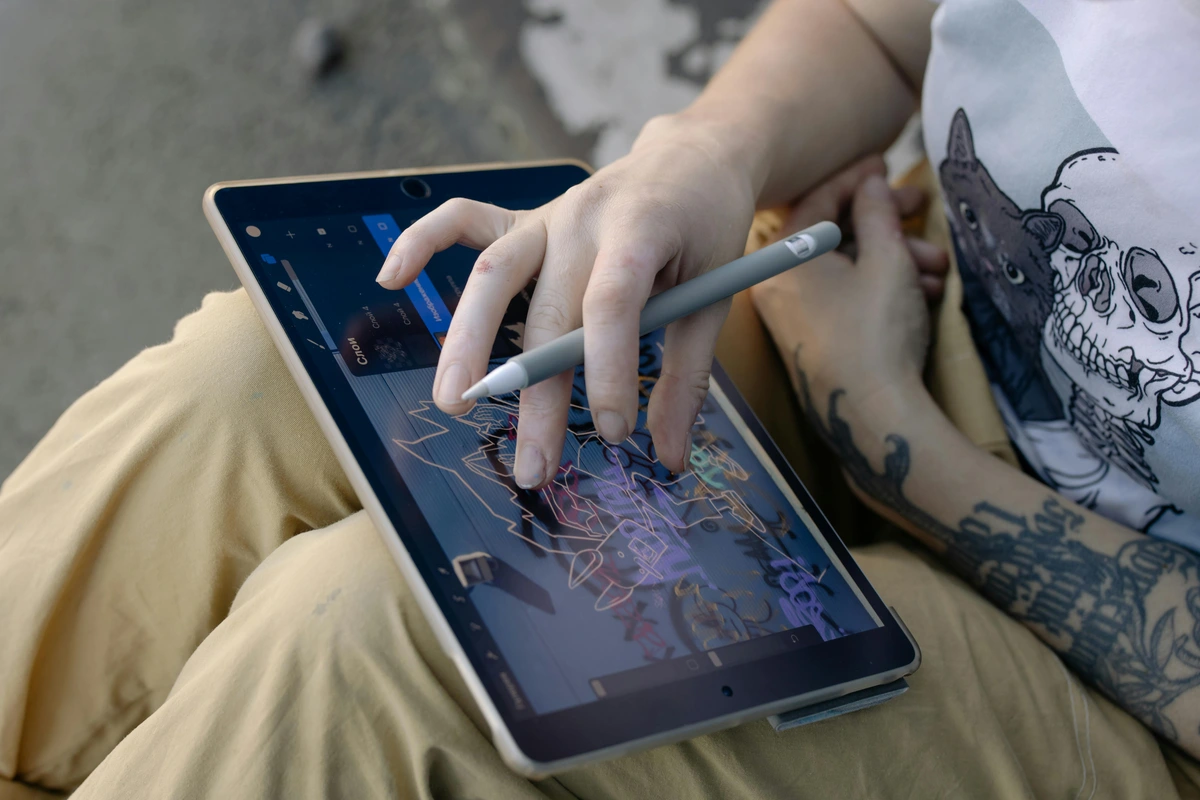
Frequently Asked Questions About Art and Children
To address some common curiosities and concerns, here are a few frequently asked questions that might be on your mind:
Q: My child only scribbles. Is that normal?
A: Absolutely! Scribbling is the very first stage of artistic development, typically seen in toddlers. It's how children explore movement, cause and effect (their hand moves, a mark appears!), and begin to understand how their actions create marks. It's a vital step towards more representational drawing and shouldn't be rushed or discouraged. Think of it as their earliest form of visual storytelling. It’s their fundamental role-play with art.
Q: What if my child says they "can't draw" or resists art activities?
A: This often happens when children start comparing their work to others' or to realistic depictions, or if they feel pressured. Gently remind them that art isn't about perfection; it's about expression and the process. Encourage them to draw what they feel or imagine, rather than trying to copy something perfectly. You could even introduce them to abstract art, where there are no "wrong" answers, simply exploration and expression. Try low-pressure prompts like, "Let's draw what we hear right now," "Draw your favorite imaginary creature," "Show me how you feel with colors and shapes," or simply experimenting with color mixing or texture rubbings. To model a growth mindset, perhaps share one of your own "imperfect" drawings or tell a story about a time you struggled with an art project but learned from it. Celebrating effort over innate talent is key. Remember, the role of play in art-making is crucial.
Q: Do I need special art supplies?
A: Not at all! Basic crayons, washable markers, tempera paints, clay (even play-doh!), and plenty of paper are a great start. Recycled materials like cardboard, fabric scraps, bottle caps, or even leaves and twigs from outside can also be fantastic for creative projects and exploring texture. You can even make homemade paints from flour, water, and food coloring. The emphasis should be on exploration, not expense.
Q: How much time should my child spend on art?
A: There's no magic number. What's important is consistency and making art an option. Even short, regular bursts of creative time are more beneficial than long, infrequent sessions. The goal is to integrate it naturally into their lives, like reading or playing outside. Sometimes, just 10-15 minutes of focused, quality art play can be incredibly enriching, prioritizing depth of engagement over sheer duration.
Q: What if my child is more interested in building or science than art?
A: That's fantastic! Art isn't just about painting; it's about creative problem-solving and visualization, skills essential to building and science. Encourage them to design their inventions, draw blueprints, sculpt models of planets or molecules, or even experiment with colors and textures in their scientific observations. Many famous scientists and engineers, like Leonardo da Vinci or Samuel Morse, were also prolific artists; the disciplines often complement each other beautifully. Think of art as another powerful lens through which to explore the world.
Q: How does screen time and art time balance each other?
A: While digital tools can certainly be creative outlets (as mentioned earlier), offering new forms of expression through digital drawing apps or animation, hands-on art provides a unique sensory and tactile experience that screen time often lacks. It's about balance. Encourage both, but ensure there's ample opportunity for traditional art forms that engage all the senses and require physical manipulation of materials. Think of digital art as a wonderful extension, not a replacement, for the rich, messy world of physical art-making.
Q: How does art help children develop their sense of identity and self-expression?
A: Art provides a unique platform for children to explore who they are and how they see the world. Through their creations, they assert their individuality, express personal tastes, and communicate thoughts and feelings that might be difficult to vocalize. The act of making art is an affirmation of their unique perspective, building confidence and a strong sense of self. Each artwork is a piece of their identity, made tangible. Moreover, engaging with art can be a powerful way for children to connect with and express their cultural heritage and family narratives, fostering a deeper understanding of where they come from and who they are within a larger context.
Q: I'm not artistic myself. How can I encourage my child if I feel inadequate?
A: This is such a common feeling! But remember, your role isn't to be an art teacher or a skilled artist, but an encourager and a facilitator. Your child doesn't need you to create masterpieces; they need you to value their creative process. Focus on providing materials, asking open-ended questions about their work ("Tell me about this part," "What do you like most?"), and simply enjoying the time together. Your enthusiasm for their exploration is far more important than your own artistic ability. Sometimes, just sitting alongside them and doodling your own simple shapes can be incredibly empowering for a child.
A Final Brushstroke
Ultimately, art isn't just about creating beautiful objects; it's about creating beautiful minds. It teaches resilience, fosters empathy, ignites curiosity, and gives children a unique voice. So, let them get messy, let them experiment, and most importantly, let them revel in the pure, unadulterated joy of creation. It's a gift that keeps on giving, shaping not just future artists, but future thinkers, problem-solvers, and compassionate humans. I truly believe that embracing that creative spirit in childhood lays the foundation for a richer, more imaginative life, one where, who knows, maybe they’ll also choose the purple sun, unapologetically. What kind of creative adventures will you encourage today, knowing the profound impact they can have? I'd love to hear your own stories and discoveries in the comments below!




